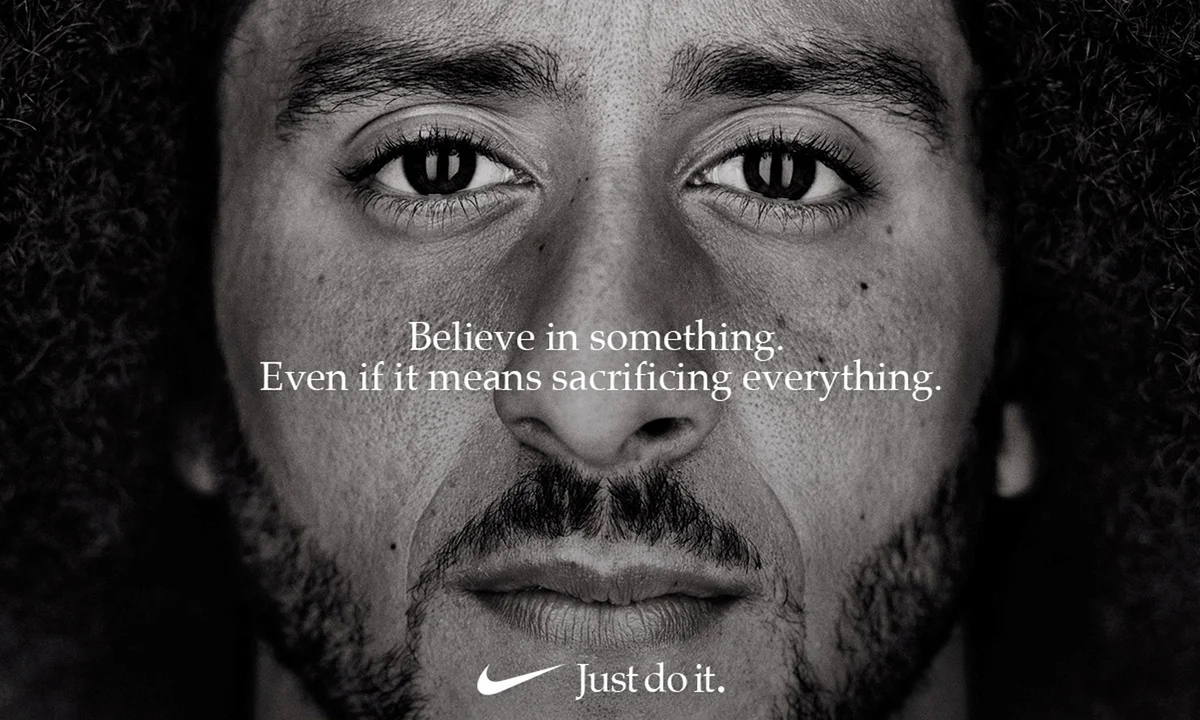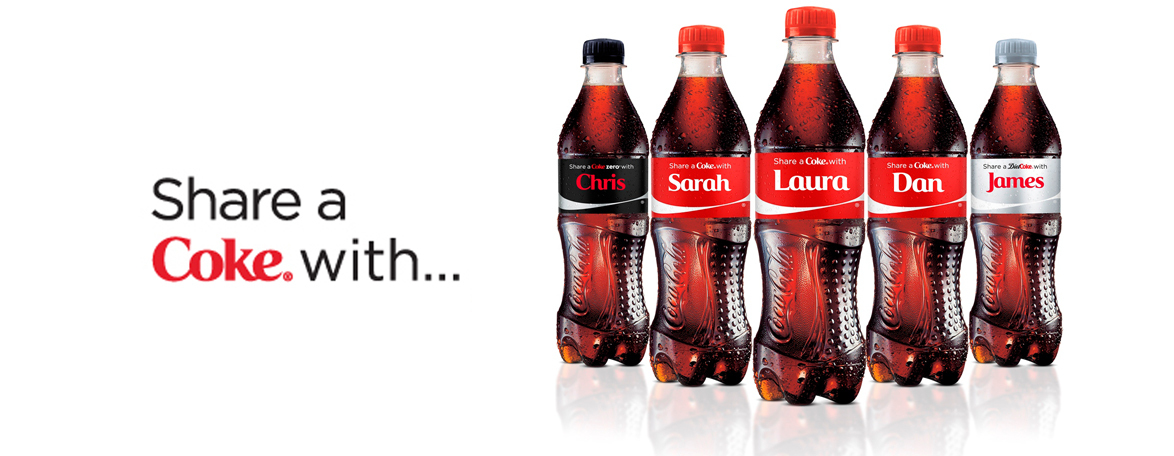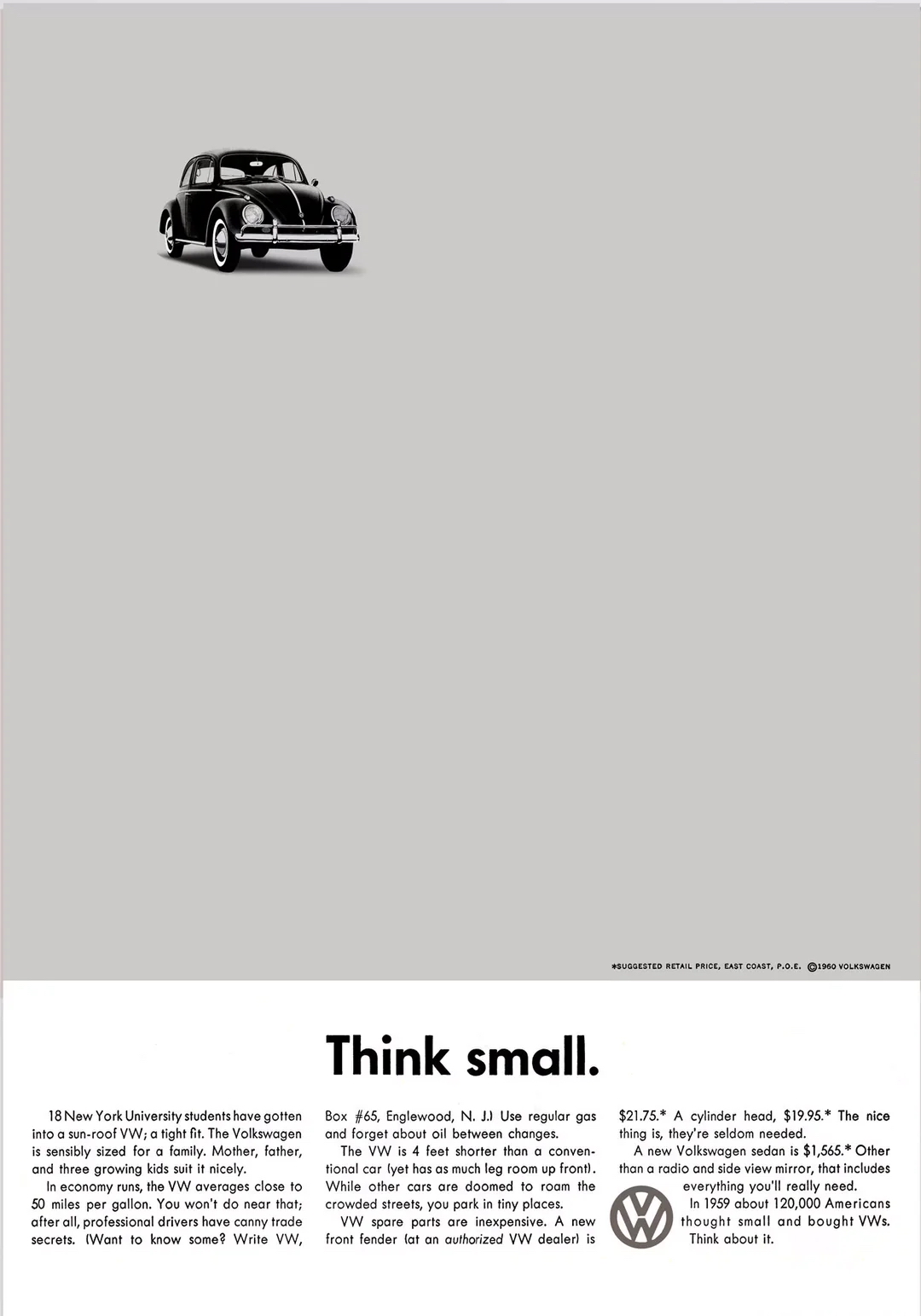7 Iconic Brand Slogan Examples, Analysed
Discover 7 iconic brand slogan examples. We analyse what made them effective and provide actionable takeaways for your own brand strategy.
Tags
Brand
Thoughts
Date published
August 10, 2025
Author
Alice Airborne
A great brand slogan does more than sell a product; it distills a brand’s entire strategy into a few memorable words. But what separates a fleeting catchphrase from a line that builds an empire? The difference is the strategic foundation. A truly effective brand slogan isn't just creative flair—it's a calculated business asset designed to carve out a distinct market position, foster loyalty, and drive growth. It becomes the North Star for every brand decision that follows.
This article moves beyond a simple showcase of famous ads. We’ll dissect seven legendary campaigns, from Nike’s 'Just Do It' to Apple's 'Think Different', to reveal the strategic machinery behind their success. For each example, we'll break down the specific tactics used, analyse why they were so effective, and provide actionable takeaways that founders can apply to their own brand-building efforts. You'll learn how to transform a simple tagline into a powerful strategic brand tool. Once a slogan becomes this kind of asset, you might even consider new channels to amplify its reach, exploring tactics to connect with targeted audiences in a highly engaging format.
1. Nike's 'Just Do It' Campaign (1988)
Nike's 'Just Do It' is more than a successful slogan; it's a masterclass in brand transformation. Launched in 1988 by agency Wieden+Kennedy, the campaign elevated Nike from a niche running shoe company into a global symbol of determination. Its genius lies in its simplicity and universal appeal. The phrase isn't a product feature but a command—a piece of internal motivation externalised.
This slogan doesn't sell shoes; it sells a mindset. It connects with the fundamental human desire to overcome inertia and achieve a personal goal, whether that's running a marathon or simply getting off the sofa.

Strategic Analysis: Universal Emotion, Specific Application
The campaign’s power comes from its strategic duality. The message is broad enough to resonate with everyone, yet it is consistently applied to specific, powerful stories of athletic grit. From Michael Jordan's dominance to Colin Kaepernick's controversial stand and Serena Williams' retirement tribute, Nike has relentlessly backed its slogan with authentic, often polarising, brand actions.
Strategic Insight: Nike's approach was to create an emotional ecosystem. The slogan provides the overarching theme, while individual campaigns and athlete endorsements serve as compelling, real-world proof points. This turns a simple tagline into a deeply held brand philosophy.
Actionable Takeaways for Your Brand
To replicate this success, focus on a core human truth that aligns with your brand's purpose.
- Keep it Simple and Action-Oriented: Your slogan should be easy to remember and inspire action. 'Just Do It' is a direct, empowering command.
- Align Message with Authentic Actions: Motivational messaging falls flat without proof. Back up your slogan with company initiatives, customer stories, or partnerships that demonstrate your commitment to its values.
- Maintain Consistency, Allow Flexibility: The core slogan should remain consistent, but its creative application can and should evolve to stay culturally relevant.
Launch Year:1988
Market Share Growth: North America 18% -> 43%
Revenue Milestone: $9.79 Billion by 2018
The data clearly illustrates how the 'Just Do It' campaign catalysed staggering growth, helping Nike secure a dominant market position and setting the stage for its journey to becoming a global powerhouse.
2. Apple's 'Think Different' Campaign (1997)
Apple's 'Think Different' campaign was not just a brand with a new slogan; it was a cultural reset for a company on the brink of failure. Launched in 1997 upon Steve Jobs's return, the campaign, conceived by agency TBWA\Chiat\Day, repositioned Apple from a struggling computer manufacturer into a beacon for the creative, the rebellious, and the visionary. It was a bold declaration of identity that resonated far beyond product specifications.
The slogan didn't sell a computer; it sold an ideology. By associating the brand with icons like Albert Einstein, Martin Luther King Jr., and Muhammad Ali, Apple aligned itself with the geniuses and misfits who changed the world. This masterstroke cemented its status as the brand for those who dare to challenge the status quo.
Strategic Analysis: Brand Mythology, Not Product Marketing
The campaign's triumph was its audacious focus on values over features. At a time when competitors were boasting about processing speeds and memory, Apple celebrated a mindset. The ads rarely showed a product, instead focusing on black-and-white portraits of historical figures, creating an emotional connection with an audience that defined itself by its creativity and non-conformity.
Strategic Insight: Apple built a brand mythos. The slogan established a tribe of 'crazy ones', and owning an Apple product became an outward symbol of belonging to that tribe. This strategy transformed customers into evangelists and a computer into a statement of personal identity.
Actionable Takeaways for Your Brand
To harness this approach, anchor your brand in a powerful, authentic belief system.
- Sell an Identity, Not Just a Product: Connect your brand to a core value or belief that your target audience holds dear. What does using your product say about them?
- Use Aspirational Storytelling: Associate your brand with figures or stories that embody its core values. This creates a powerful emotional shortcut for consumers.
- Dare to Be Different: In a crowded market, conforming is a losing strategy. The 'Think Different' campaign succeeded because it deliberately drew a line in the sand, separating 'us' from 'them'.
3. Coca-Cola's 'Share a Coke' Campaign (2011)
Coca-Cola's 'Share a Coke' campaign, initiated in Australia in 2011, represents a paradigm shift from mass communication to mass personalisation. By replacing its iconic script logo with hundreds of popular first names, the campaign, developed with agency Ogilvy & Mather Sydney, transformed a globally recognised product into a personal invitation. It was a simple, yet profoundly effective, advertisement with a slogan that was not spoken, but experienced.
This initiative turned every bottle into a potential conversation starter and a vehicle for user-generated content. It wasn't just about selling a drink; it was about facilitating a moment of connection, prompting consumers to actively hunt for their name or the name of a loved one, and then share that discovery.

Strategic Analysis: Personalisation at Scale
The campaign's brilliance lies in its execution of personalisation on a massive scale. While the core product remained unchanged, the packaging became a highly personal token. This strategy tapped into the fundamental human desire for recognition and belonging, making consumers feel seen by a giant global brand.
The physical act of searching for and sharing a Coke created an interactive brand experience that extended far beyond the point of sale. The campaign smartly leveraged this behaviour, encouraging digital sharing with hashtags and creating a powerful loop of physical discovery and online engagement that revitalised the brand for a new generation.
Strategic Insight: Coca-Cola demonstrated that a brand's packaging can be its most powerful advertising medium. By turning the product itself into a personalised message, they created a self-perpetuating marketing engine fuelled by consumer participation and social proof, blurring the lines between product, media, and personal experience.
Actionable Takeaways for Your Brand
To harness the power of personalisation, think beyond digital customisation and consider the physical product experience.
- Make Your Product the Message: Find a way to make your product or its packaging a conduit for a personal connection. This could be through names, locations, or even user-submitted designs.
- Fuel User-Generated Content (UGC): Design your campaign to be inherently shareable. The 'Share a Coke' experience was a natural photo opportunity, generating millions of pieces of free marketing content across social platforms.
- Bridge the Physical and Digital: Create a seamless link between your physical product and your digital channels. Use hashtags, QR codes, or dedicated microsites to encourage online interaction stemming from a real-world product experience.
4. McDonald's 'I'm Lovin' It' Campaign (2003)
The McDonald's 'I'm Lovin' It' campaign is a monumental example of global brand unification through a simple, emotionally resonant advertisement with a slogan. Launched in 2003 by German agency Heye & Partner, it was McDonald's first-ever globally unified marketing effort. The campaign replaced dozens of disparate local slogans with one cohesive message, transforming the brand's voice into something modern, upbeat, and universally understood.
Its power lies in its focus on the feeling, not the food. 'I'm Lovin' It' captures the simple, unadulterated joy of a McDonald's experience. It’s a statement of personal satisfaction that cleverly shifts the narrative from fast food to feel-good moments—a crucial pivot for a brand navigating evolving public perceptions.
Strategic Analysis: Audio Branding, Global Consistency
The campaign's masterstroke was integrating a memorable five-note audio jingle, or "sonic logo," that became as recognisable as the Golden Arches themselves. This audio element, famously launched with a full-length song by Justin Timberlake, ensured the slogan was heard and felt across all touchpoints, from TV commercials to in-store announcements. This created an unbreakable link between a specific sound and the brand's core emotional promise.
The strategy allowed for global consistency in messaging while permitting local-market flexibility in execution. Whether through Olympics sponsorships or local celebrity endorsements, the core "I'm Lovin' It" theme remained the anchor, proving that a unified brand identity can thrive without stifling regional cultural relevance. For a deeper dive into how brands successfully merge identity with technology, explore these insights on brand and technology.
Strategic Insight: McDonald's didn't just create a slogan; it engineered a multi-sensory brand experience. The sonic logo ensured the campaign's message transcended language and cultural barriers, embedding itself into the public consciousness through repetition and a powerful association with pop culture.
Actionable Takeaways for Your Brand
To build this level of brand recall, think beyond visual identity and consider the power of sound.
- Create Memorable Audio Elements: Develop a unique jingle, sound bite, or sonic logo. A consistent audio cue can dramatically increase brand recognition and emotional connection.
- Unify with a Core Emotion: Identify a single, positive feeling your brand evokes. Build your slogan around this emotion to create a message that resonates on a human level, transcending product features.
- Plan for Long-Term Integration: A great slogan isn't a one-off campaign. 'I'm Lovin' It' has succeeded because it has been consistently integrated into every facet of the McDonald's brand for nearly two decades.
5. Old Spice's 'The Man Your Man Could Smell Like' Campaign (2010)
Old Spice’s 2010 campaign, created by Wieden+Kennedy, was a masterstroke of brand resurrection. It took an ageing men's grooming brand, often associated with grandads, and rocketed it into the epicentre of digital culture. The campaign, fronted by the impossibly charming Isaiah Mustafa, was a perfect storm of absurdist humour, flawless production, and a slogan that became an instant meme: "I'm on a horse."
This campaign with this slogan didn't just sell body wash; it redefined the brand's entire persona. By speaking directly to female partners ("Hello, ladies…") but doing so with a wink and a nod that appealed to men, Old Spice brilliantly navigated a complex demographic challenge, making the brand cool, funny, and immensely shareable.
Strategic Analysis: Viral by Design, Human by Execution
The campaign's success was rooted in its deep understanding of the nascent social media landscape. The initial TV spot was engineered for virality with its single-take magic, quotable lines, and surreal visual gags. It was the perfect content for YouTube, where it exploded. The real genius, however, came next with the "Response Campaign," where Mustafa recorded over 180 personalised video replies to fans and celebrities on Twitter in near real-time.
This move transformed a one-way broadcast into a two-way conversation, making audiences feel seen and heard. It was a pioneering example of reactive, agile marketing that felt personal and authentic, despite being a large-scale corporate effort.
Strategic Insight: Old Spice’s strategy was to create a charismatic brand character and then let that character live and breathe on social media. They built a spectacular creative launchpad and then used it to fuel genuine, high-speed audience engagement, turning passive viewers into active participants and brand evangelists.
Actionable Takeaways for Your Brand
To harness this kind of cultural momentum, your brand must be brave, creative, and incredibly agile.
- Embrace Differentiated Creative: Don't be afraid to be weird. The campaign's surreal humour stood out in a sea of generic men's advertising. Find a unique voice that cuts through the noise.
- Plan for Rapid Response: The personalised video response campaign wasn't an accident; it was a planned execution. If you intend to engage with your audience in real time, have the resources, creative team, and decision-makers ready to act instantly.
- Create Shareable Moments: Engineer your campaign with shareability in mind. Think in terms of quotable soundbites, memorable visuals, and a core concept that people will want to discuss and share with their networks.
6. Volkswagen's 'Think Small' Campaign (1959)
Volkswagen's 'Think Small' campaign is a seminal moment in advertising history, fundamentally shifting how products were marketed. Launched in 1959 by the agency Doyle Dane Bernbach (DDB), it took what was perceived as the Volkswagen Beetle's biggest weakness—its small size and strange shape—and repositioned it as its greatest strength. At a time when American automotive advertising was dominated by glamour shots of large, powerful cars, this advertisement with slogan chose radical honesty.
The campaign's brilliance was in its counter-intuitive, self-deprecating approach. It didn't try to make the Beetle something it wasn't. Instead, it used minimalist design and witty, intelligent copy to celebrate its practicality, efficiency, and reliability, appealing to a new generation of consumers who valued substance over status.

Strategic Analysis: Honesty as a Disruptive Force
The power of 'Think Small' came from its brutally honest and logical appeal. Print ads like 'Lemon' and the original 'Think Small' featured a tiny image of the car surrounded by vast white space, visually reinforcing the slogan and capturing immediate attention. The copy then laid out a rational argument for owning a Beetle: lower cost, better fuel economy, and meticulous quality control.
This strategy was a direct challenge to the emotional, aspirational advertising of Detroit's automotive giants. Volkswagen and DDB recognised a segment of the market that was tired of superficiality and yearned for intelligent, straightforward communication. The campaign spoke to them as smart consumers, not just passive dreamers.
Strategic Insight: Volkswagen weaponised authenticity. By embracing product "flaws" and transforming them into benefits with humour and logic, they created a powerful bond of trust with their audience. The campaign proved that you don't need to shout the loudest to be heard; you need to say something true.
Actionable Takeaways for Your Brand
To harness this strategy, brands must be willing to embrace their unique, even unconventional, attributes.
- Embrace Your Authentic Attributes: Don't hide what makes your product different. Identify your unique selling propositions, even if they go against industry norms, and build your narrative around them.
- Challenge Industry Conventions: Look at what your competitors are doing and consider doing the opposite. If their advertising is loud and flashy, yours can be quiet and minimalist. Disruption gets you noticed.
- Use Intelligence and Humour: Address potential customer objections head-on with wit and respect for their intelligence. This approach can disarm scepticism and build a strong rapport.
7. Dove's 'Real Beauty' Campaign (2004)
Dove's 'Real Beauty' campaign, launched in 2004 by Ogilvy & Mather, represents a seismic shift in marketing, transforming a simple soap brand into a global advocate for self-esteem. It fundamentally challenged the advertising world's narrow, idealised portrayal of women by featuring "real women" of diverse ages, sizes, and ethnicities. The campaign's core idea was not to sell a product, but to start a conversation and build a purpose-driven brand.
This move was a brave departure from traditional beauty advertising. By focusing on the emotional and societal pressures women face, Dove created an authentic connection with its audience, turning consumers into loyal brand ambassadors who saw the company as a reflection of their own values.

Strategic Analysis: Purpose-Driven Marketing, Cultural Conversation
The campaign's brilliance lies in its ability to tap into a powerful, pre-existing cultural tension: the disparity between media-defined beauty and women's real-life appearances. Dove didn’t invent this conversation; it gave it a massive platform. From billboards featuring real women to viral videos like 'Evolution' and 'Real Beauty Sketches', each execution was designed to provoke thought and media discussion, generating enormous earned media value.
This strategy transformed Dove's advertisement with slogan from a mere marketing message into a cultural movement. It repositioned the brand from a functional product provider to a purpose-led industry leader committed to a social cause.
Strategic Insight: Dove's masterstroke was aligning its brand purpose with a deeply felt consumer truth. The campaign became a platform for community, conversation, and shared values, proving that a brand could stand for something more than its product. This approach fosters a level of loyalty that transactional marketing can never achieve.
Actionable Takeaways for Your Brand
To build a brand with this level of cultural resonance, focus on identifying and championing a core value that matters to your audience.
- Champion a Cause, Don't Just Sell a Product: Find a genuine societal or industry issue your brand can authentically address. Your marketing should serve this cause first and your product second.
- Build a Community Around Shared Values: Use your platform to foster discussion and connection. As highlighted in this article on building an agency around a community, true brand loyalty comes from shared identity, not just transactions.
- Embrace Authenticity and Prepare for Debate: Taking a real stand can be polarising. Be prepared for both praise and criticism, and ensure your internal company actions consistently support your external messaging.
- Maintain Long-Term Consistency: A purpose-driven campaign is a long-term commitment, not a short-term tactic. The 'Real Beauty' message has remained central to Dove's identity for nearly two decades, building immense brand equity over time.
From Slogan to Strategy: Building Your Own Iconic Brand Message
Throughout this deep dive into iconic brand slogans, a clear pattern emerges. The most powerful slogans are never just clever turns of phrase; they are the strategic spearhead for a much larger brand narrative. From Nike’s motivational command to Volkswagen’s contrarian whisper, each memorable tagline we've examined serves as a compact, resonant expression of a core brand promise.
These campaigns teach us that a slogan's true power isn't in what it says, but in what it represents. It’s the distillation of countless strategic decisions, market research, and a profound understanding of the target audience’s deepest desires and pain points. Apple didn't just sell computers with "Think Different"; it sold an identity to the creative rebels. Dove didn't just sell soap with "Real Beauty"; it sold self-acceptance to a generation of women tired of unrealistic standards.
Key Strategic Takeaways
The journey from a blank page to an unforgettable slogan is paved with strategic intention. As you look to craft your own, remember these core principles distilled from the giants of advertising:
- Anchor in Your Core Truth: Your slogan must be an authentic reflection of your brand’s purpose, values, and what you uniquely offer. Volkswagen's "Think Small" worked because the Beetle was small, and the brand leaned into that truth with confidence.
- Speak to a Human Need: The best slogans connect with fundamental human emotions and aspirations. Nike’s "Just Do It" taps into the universal desire for self-improvement, while Coca-Cola’s "Share a Coke" appeals to our need for connection.
- Embrace Brevity and Rhythm: A slogan must be memorable and repeatable. The sharp, punchy cadence of "I'm Lovin' It" or the simple, direct "Think Different" makes them easy to recall and internalise, turning them from marketing messages into cultural soundbites.
- Be the Catalyst, Not the Conclusion: An effective slogan doesn't tell the whole story; it invites the audience to discover it. It opens a loop, sparking curiosity and encouraging engagement. Old Spice’s bizarre campaign didn't explain the product, it created a phenomenon that people had to investigate.
Your Next Steps: From Insight to Implementation
Armed with these insights, the next step is to turn theory into practice. Don't start by brainstorming words. Start by clarifying your brand strategy. Ask yourself the hard questions: What is the single most important idea we want to own in our customer's mind? What tension exists in their world that our brand can resolve? Who are we, and why should anyone care?
Answering these questions honestly provides the raw material for a brand slogan that does more than just describe—it inspires. A great brand slogan is the ultimate testament to brand clarity. When you know precisely who you are and what you stand for, the right words have a powerful way of finding you. Your slogan becomes less of an invention and more of a discovery—the inevitable and perfect expression of your brand’s soul.

Partner with us
Our partnership model sets us apart. We remain agile, like outsiders looking in. Yet we dive deep, gaining an insider's view of your business. Your challenges become our challenges. Your goals, our north star. Curious about our long-term brand collaborations? Let's explore them together.
